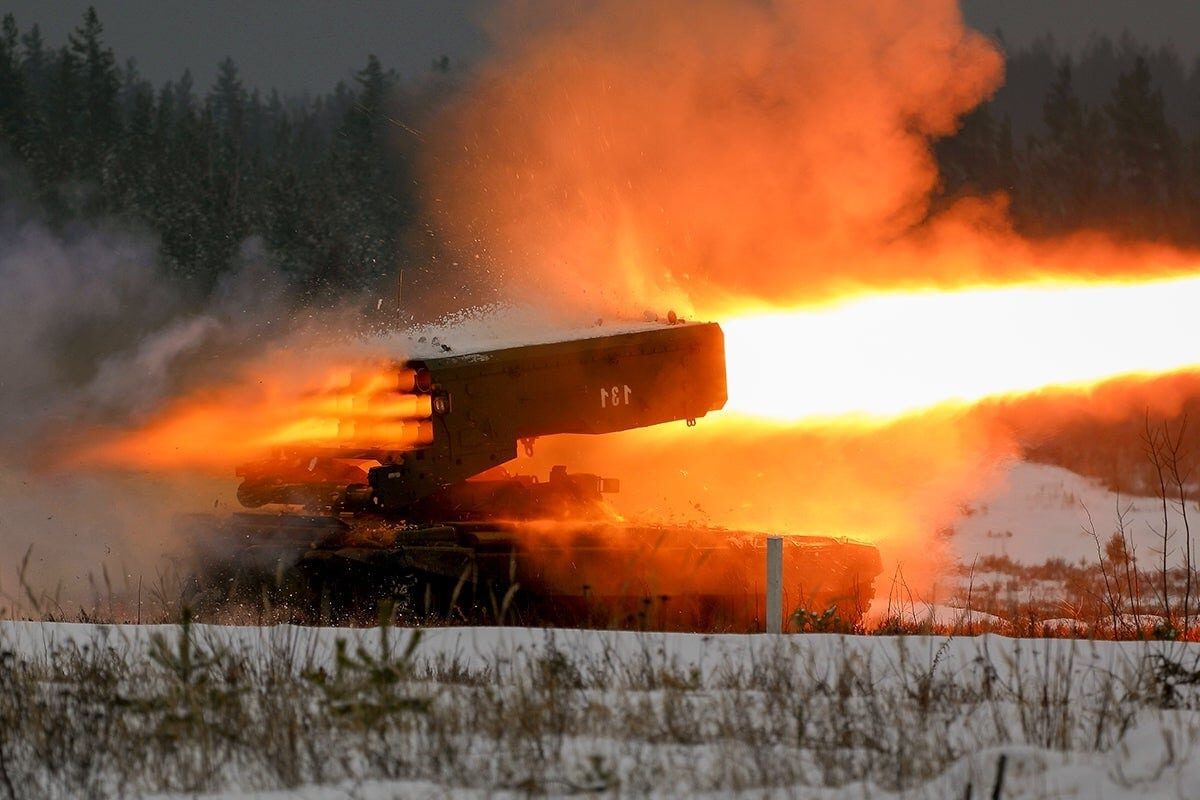Cluster bombs rained down on Kharkiv, Ukraine’s second-biggest city, on Monday. The attack injured at least one person in the city, and residents showed reporters in the city the remnants of the bombs dropped on the city.
Cluster munitions are a kind of missile that eject smaller submunitions during an attack. They are banned under the Convention on Cluster Munitions that was signed in December 2008 but which has never been recognized by Russia.
NPR reported on a similar strike that occurred back in April, revealing the intricacies of a bomb squad’s role in neutralizing cluster bombs in the city.
Butcher of Syria Responsible
CNN revealed over the weekend that Colonel General Alexander Zhuravlyov, the so-called “Butcher of Syria” who oversaw Russia’s brutal attacks on civilian populations in the country, was responsible for cluster bomb strikes in Kharkiv and throughout the rest of Ukraine.
“CNN traced 11 Smerch rockets that landed in Kharkiv on February 27 and February 28 back to Russia’s 79th Rocket Artillery Brigade, based in Russia’s Belgorod region,” the outlet reported.
Military experts also confirmed that Zhuravlyov is the only Russian officer who has the authority to order a Smerch rocket attack in Kharkiv, meaning he is behind the use of the controversial weapons.
What is the Smerch Rocket?
The Smerch 9K58 is a Russian Multiple Launch Rocket System that is also used in India and Ukraine. Manufactured in Tula, Russia, by the Splav State Research and Production Association, the missile system was developed in the early 1980s and officially entered into service with the Russian military in 1988.
The Smerch MLRS works with the 300mm 9M55K missile which can be fired as far as 70km using the rocket launcher system. Missiles contain a 72 HE-FRAG high-explosive fragmentation submunition or a HE-FRAG separable unitary warhead. It may also be fitted with anti-armor submunitions.
Smerch rockets use “smart” submunitions. These are submunitions released by the missile that use dual-colored infrared sensors to find its targets. Once the rockets reach the target, they are capable of penetrating 70mm armor.
Russian troops also use an updated and modernized version of the missile system known as the 9A52-4 Tornado. More modern versions can carry six launch tubes, fewer than the original model which carried 12. However, the newer models can also carry two operators, and missiles can be fired as far as 120km.
Rockets fired by the Tornado models are also as much as 20 times more accurate than the older Smerch missiles.
Jack Buckby is a British author, counter-extremism researcher, and journalist based in New York. Reporting on the U.K., Europe, and the U.S., he works to analyze and understand left-wing and right-wing radicalization, and reports on Western governments’ approaches to the pressing issues of today. His books and research papers explore these themes and propose pragmatic solutions to our increasingly polarized society.

